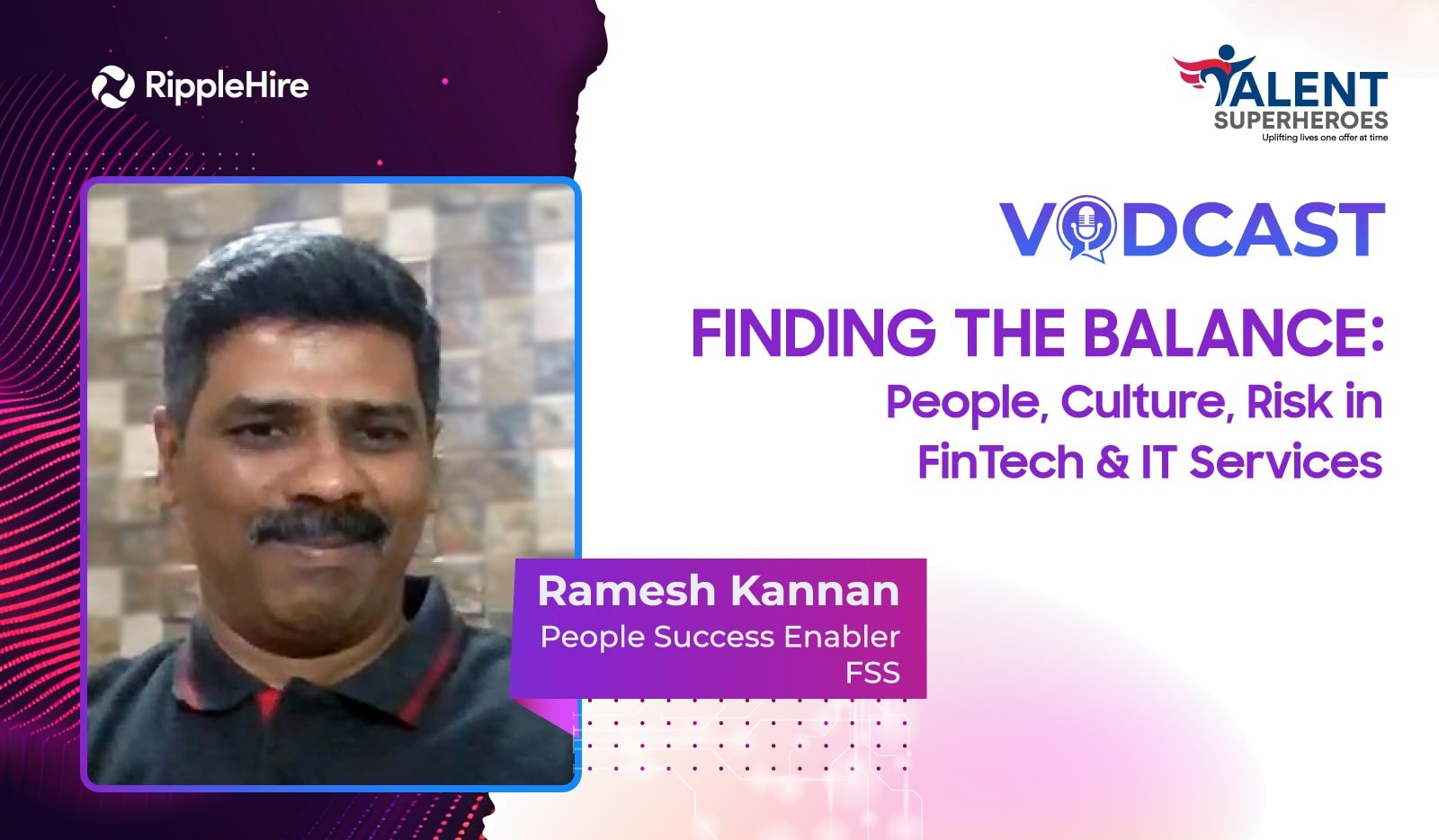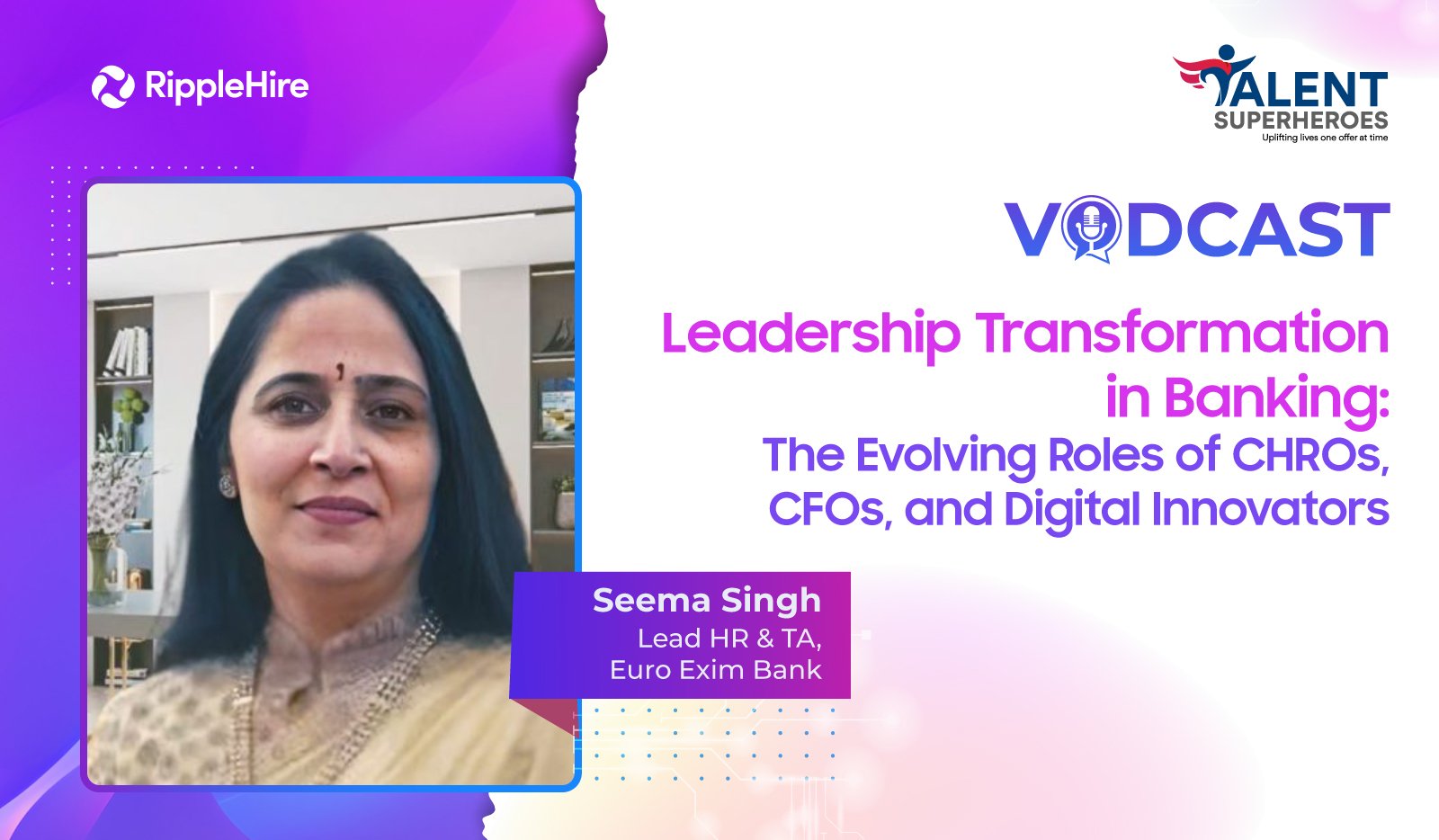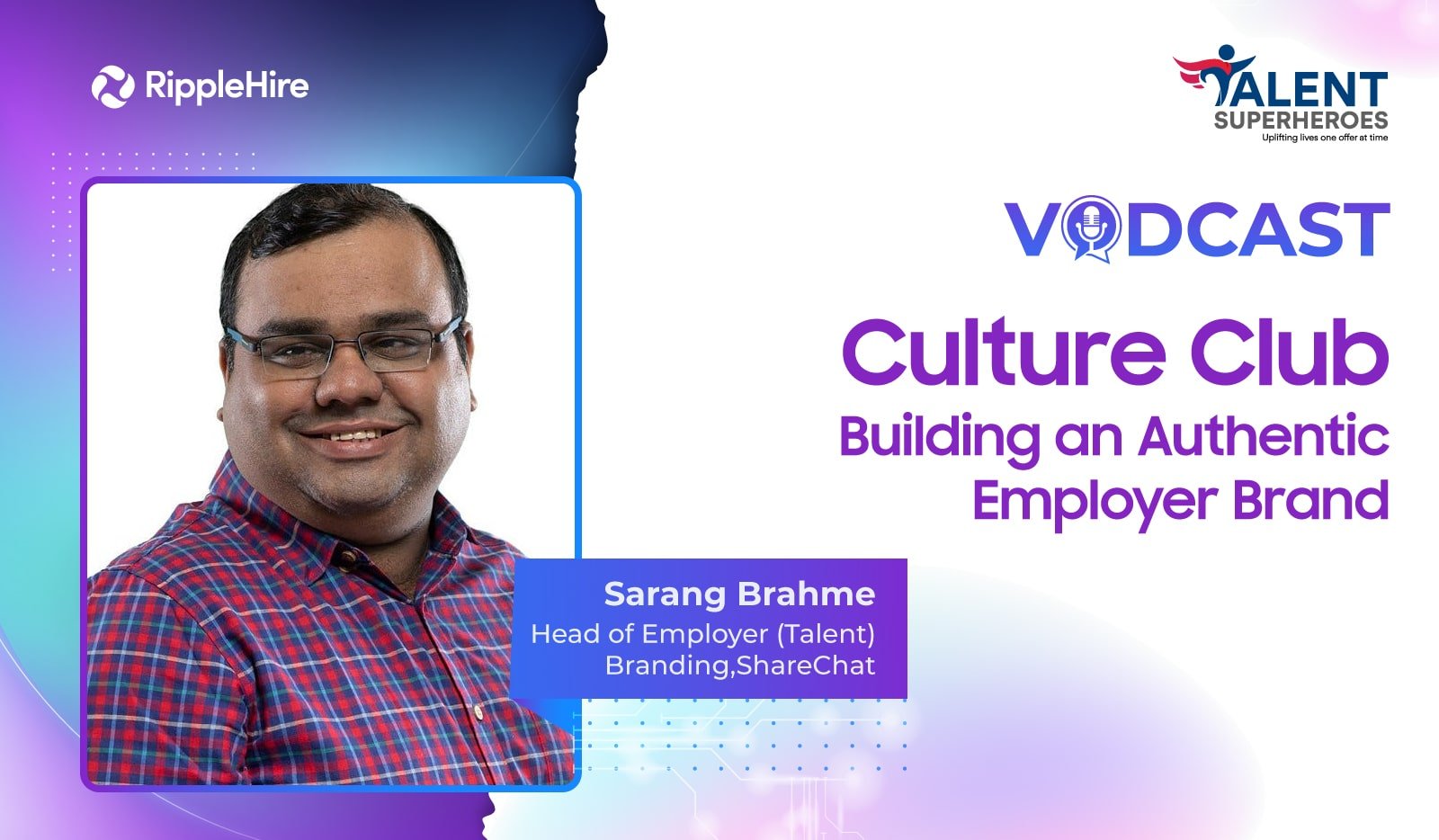RippleHire, a leading talent acquisition platform, has been simplifying recruiting since 2012. With 1M+ users across 50+ countries, its intelligent Talent Acquisition Cloud helps companies efficiently hire the right talent while delivering exceptional experiences, consistently achieving high 4.5/5 satisfaction scores from candidates and recruiters.
In this podcast, we sat with Ramesh Kannan, People Success Enabler at FSS. He is an accomplished HR professional with over 20 years of experience in IT/ITES. He has successfully led global teams in American and European organizations, driving growth through resilience, wisdom, and coaching.
How do you see HR being different between a FinTech organization and an IT services organization? What do you see as some fundamental changes?
From an HR perspective, the common thread across industries is people. People are a bundle of logic and emotions. The key question is: How do you work with people in a frame of reference that aligns with the company's needs and motivates employees? From a business perspective, priorities and sensitivities can differ between fintech, IT services, and other industries. But from an HR point of view, I look at what is common - people and their logic and emotions.
When you go in and partner with the CEO, what are some ways in which you look to enable a culture change so that there is better alignment?
HR could be a department, but as a function, it is not limited only to the HR department. It is about enrolling as many people as possible into the agenda the company wants, in a way that also addresses what the larger employee base aspires to and is motivated by. How do you strike that balance by working with them?
It's not about HR unilaterally coming up with grand programs backed by fancy PowerPoint decks and rigid policies. We should ask — How do we get the best ideas from the employees themselves? How do we enroll them in our efforts in a way that they feel really important, like customers? Much of the impactful programs we developed at various companies incorporated significant input and active participation from employees themselves.
In a FinTech company, how do you balance between innovation and risk, given the people and processes required for each are very different?
I want to break some paradigms here. Why do we need to keep management, employees, customers, and risk concerns separate? What makes us think people won't understand the risks we face or the innovations we need to pursue?
I feel as long as you involve employees in the "why" of what needs to be done and achieved if it is co-conceived, it becomes everybody's shared agenda. Nobody wants their idea to fail once they understand the purpose behind it.
Instead of the HR or risk department writing up fancy policy documents in isolation, why not involve employees in co-creating those very policies? Everybody then understands the purpose and the guiding principles. And it becomes much simpler to collectively decide what needs to be done to uphold those principles.
When setting up teams, do you focus more on hiring people with a certain mindset or coaching people into a certain mindset?
I think each of us has different personalities - you have your DNA, I have mine. It's about looking at what you bring to the table as value, and leveraging your unique DNA to derive that value, rather than focusing on what's lacking.
It's okay to have people with different mindsets. Let's accept them for who they are and set an agenda with clear intent. I've generally found that if you provide people with the right frame of reference and get their alignment by reasoning with them, they do a great job, regardless of their starting mindset.
Why don't many more companies do participative policy-making, like involving employees in creating risk policies, versus top-down approaches? Is it a function of effort or trust?
Even at the level of countries, participative decision-making has been implemented successfully. Switzerland held referendums on employment benefits, and Brexit was decided by a referendum. If countries can engage their citizens in key decisions, why can't companies do the same with employees? I think it's more a question of mindset than effort or trust.
Involving employees is going to make you more efficient, not less. You'll have more helping hands shaping initiatives. The process might take more effort up front compared to just sending out fiats from the top. But it minimizes your effort down the line. You solve the problem once and for all by enrolling everyone in the process.

You said "The candidate is always right" in a blog post. Where does this attitude come from, especially in a country with an abundance of people but often a mismatch in skills and roles?
It depends on how the demand-supply dynamics are playing out in the market at a given time. When the market heats up, as a candidate I have more opportunities. If I'm really good at something that's in high demand, why should I choose company A over company B? What's the value proposition you're offering me to join, stay and strive? If I don't see a compelling proposition, I'll just leave for another company.
So rather than worrying about attrition data and engagement scores, I believe the key question is: What can we as an employer do to create an ecosystem and employee value proposition that attracts and retains top talent? I like to focus on the process. The process is in your control but the outcome isn't always. Many times I don't get accepted as an HR professional with this attitude and I'm okay with that! I believe if you build the right EVP and effectively communicate it, you will attract the best talent.







 Spotify
Spotify
 Youtube
Youtube

.webp)






